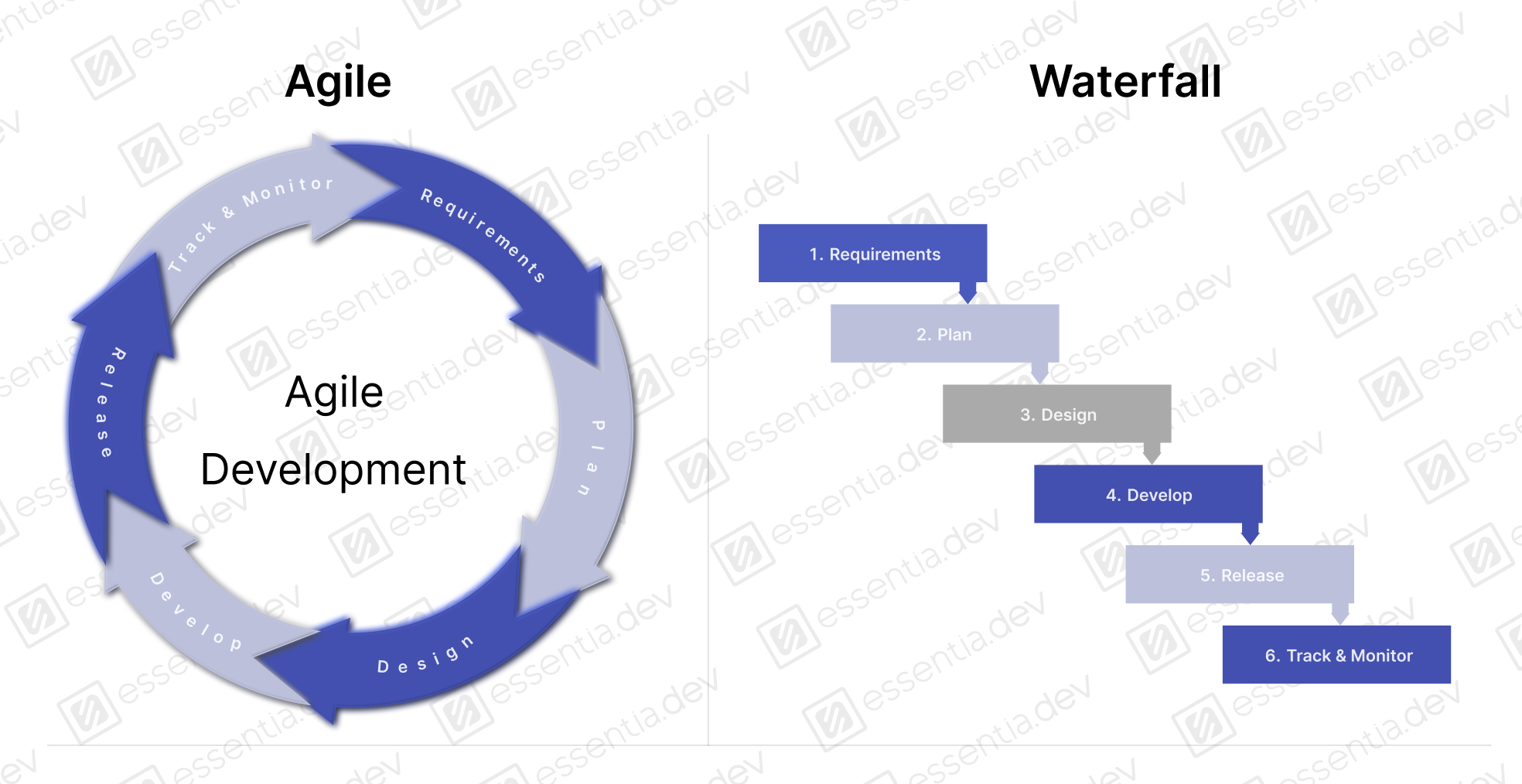Introduction
In the fast-paced world of Software as a Service (SaaS) companies, efficient project management is often the linchpin of success. While there are several project management methodologies to choose from, finding the ideal approach can be a daunting task. This blog post explores the concept of a hybrid project management approach that combines the best elements of Waterfall and Agile methodologies—a strategy that can significantly enhance project delivery efficiency and ensure success for your SaaS company.
Understanding Waterfall and Agile
Before we delve into the advantages of a hybrid approach for SaaS companies, let’s briefly revisit the key characteristics of Waterfall and Agile methodologies.
Waterfall:
-
Sequential Phases: Waterfall follows a linear and sequential approach, with each phase dependent on the completion of the previous one.
-
Detailed Planning: It involves extensive upfront planning and documentation, focusing on defining all project requirements in advance.
-
Minimal Client Involvement: Stakeholder involvement primarily occurs at the beginning and end of the project.
-
Fixed Scope and Timeline: Once the project begins, it’s challenging to make changes to the scope, leading to limited adaptability.
Agile:
-
Iterative and Incremental: Agile emphasises iterative development, with small, incremental releases of the product.
-
Adaptive Planning: Planning is ongoing, and changes to requirements are welcome, even late in the project.
-
Continuous Client Collaboration: Clients and stakeholders are actively involved throughout the project, providing feedback and guiding development.
-
Flexible Scope and Timeline: Agile allows for adjustments to scope and priorities based on evolving requirements and customer feedback.

The Hybrid Approach for Efficient SaaS Project Delivery
Let’s try and explore how a hybrid project management approach can benefit your SaaS company and optimise project delivery:
-
Structured Planning Phase for Precise Project Scop: Just like Waterfall, the hybrid approach begins with a structured planning phase. This phase is crucial for defining project goals, scope, and requirements with precision. It sets the stage for a well-defined project roadmap.
-
Iterative Development for Enhanced Adaptability: After the planning phase, your SaaS project shifts into an iterative development phase, akin to Agile. This phase facilitates ongoing adjustments to project priorities based on evolving client feedback, industry trends, and market conditions.
-
Active Client Collaboration Throughout the Project: The hybrid approach retains the essential element of continuous client collaboration from Agile. Clients remain actively involved throughout the project, allowing them to provide insights, identify potential issues early, and steer the project in the right direction.
-
Quality Assurance and Risk Management: Quality assurance and risk management practices are integrated into the project, addressing potential issues proactively. Iterative quality checks ensure that each project increment meets predefined quality standards, minimising risks.
-
Controlled Scope Management: While maintaining some level of scope control, the hybrid approach also accommodates changes when necessary. Such changes are managed through a formalised change control process, preventing project scope creep.
Benefits of the Hybrid Approach for Efficient Project Delivery
-
Improved Project Predictability: The structured planning phase provides stakeholders with a clear understanding of project scope, timelines, and costs, enhancing predictability.
-
Enhanced Adaptability: The iterative development phase allows for flexibility in responding to changing requirements, market dynamics, and client feedback, ensuring project alignment with current needs.
-
Client Satisfaction: Active client collaboration fosters better communication and transparency, ultimately leading to higher client satisfaction levels.
-
Proactive Risk Mitigation: Integrating risk management practices helps identify and mitigate potential issues early, reducing the likelihood of project disruptions.
-
Efficient Resource Allocation: The hybrid approach optimises resource allocation based on project phases, ensuring efficient resource utilisation.
Conclusion
Very often when following one project management strategy one gets bound by the cons of the same strategies. A hybrid project management approach offers the best of both worlds. When following only Waterfall methodologies it will become extremely difficult to incorporate unplanned situations and the team as well as the project might suffer. Strictly following Agile at some point felt a lot like giving into chaos. Following waterfall during the earlier stages of the project gave organisation and structure to the project, as well as a clear goal to the team. Following Agile in the later stages of the project would allow you to re-adjust your priorities to deliver what provides most value to the client and gives scope for continuous improvement.
There would be a lot many mixes out there when trying to achieve maximum efficiency and success for the delivery of a project. This is just one take. Ideally, different strategies would work best for different team sizes with different challenges. Our goal nevertheless would always be to continue to keep the conversation running on how to do better on all fronts and achieve better together.
